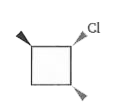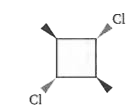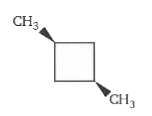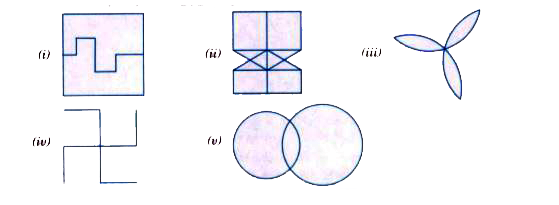Flowers of Pea possess the same symmetry as that of
Datura
Mustard
Cassia
Tomato
The correct Answer is:C
To solve the question, "Flowers of Pea possess the same symmetry as that of," we will analyze the types of floral symmetry and identify which flower shares the same characteristics as the Pea flower.
1. Understanding Floral Symmetry:
- Flowers can be classified based on their symmetry into two main types: Zygomorphic (bilateral symmetry) and Actinomorphic (radial symmetry).
- Zygomorphic flowers can be divided into two equal halves by a single vertical plane. This means they have a more complex structure and are often asymmetrical.
- Actinomorphic flowers can be divided into two equal halves by multiple planes, showing a more symmetrical and uniform structure.
2. Identifying the Flower Types:
- The question mentions Pea flowers, which are known to be zygomorphic.
- We need to find which of the given options (Tura, Mustard, Cassia, and Tomato) also has zygomorphic flowers.
3. Analyzing the Options:
- Datura: This flower is typically actinomorphic.
- Mustard: This flower is also actinomorphic.
- Tomato: This flower is actinomorphic as well.
- Cassia: This flower is known to be zygomorphic.
4. Conclusion:
- Since both Pea and Cassia flowers are zygomorphic, they share the same type of symmetry.
- Therefore, the correct answer to the question is Cassia.
Final Answer:
The flowers of Pea possess the same symmetry as that of Cassia.
---
- Flowers can be classified based on their symmetry into two main types: Zygomorphic (bilateral symmetry) and Actinomorphic (radial symmetry).
- Zygomorphic flowers can be divided into two equal halves by a single vertical plane. This means they have a more complex structure and are often asymmetrical.
- Actinomorphic flowers can be divided into two equal halves by multiple planes, showing a more symmetrical and uniform structure.
- The question mentions Pea flowers, which are known to be zygomorphic.
- We need to find which of the given options (Tura, Mustard, Cassia, and Tomato) also has zygomorphic flowers.
- Datura: This flower is typically actinomorphic.
- Mustard: This flower is also actinomorphic.
- Tomato: This flower is actinomorphic as well.
- Cassia: This flower is known to be zygomorphic.
- Since both Pea and Cassia flowers are zygomorphic, they share the same type of symmetry.
- Therefore, the correct answer to the question is Cassia.
The flowers of Pea possess the same symmetry as that of Cassia.
Similar Questions
Knowledge Check
In which of the following compound, possess plane of symmetry as well as centre of symmetry?
A B
B C
C D
D
An angle having equal arms possesses how many lines of symmetry ? Show all possible lines of symmetry in such an angle.
View SolutionWhich among the following statements are true for unisexual flowers?
(i) They possess both stamen and pistil.
(ii) They possess either stamen or pistil.
(iii) They exhibit cross pollination.
(iv) Unisexual flowers possessing only stamens cannot produce fruits.
View SolutionWhich of the following molecules possess a plane of symmetry ?
View SolutionPea flower is
View SolutionA homozygous purple flower variety of pea [PP] is crossed with white flower variety of pea [pp]. Answer the questions that follow:
Name two genetic diseases in humans.
View SolutionState which of the following figures possess at least one line of symmetry :

View SolutionAnimlas possess various type of symmetry . Select the correctly matched .
View Solution
